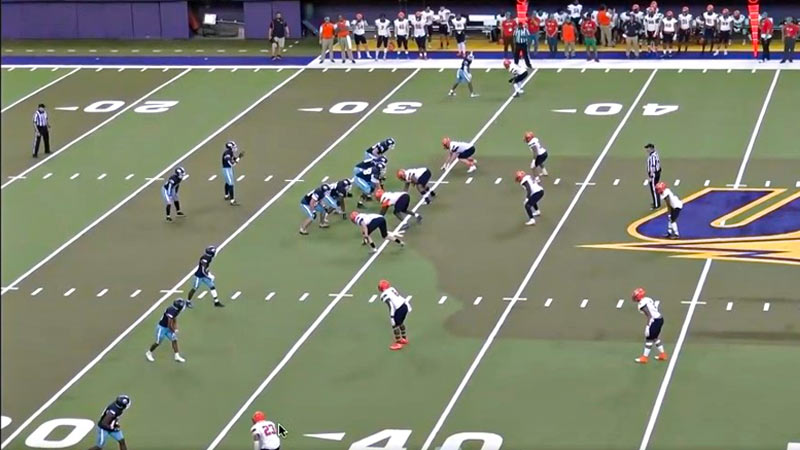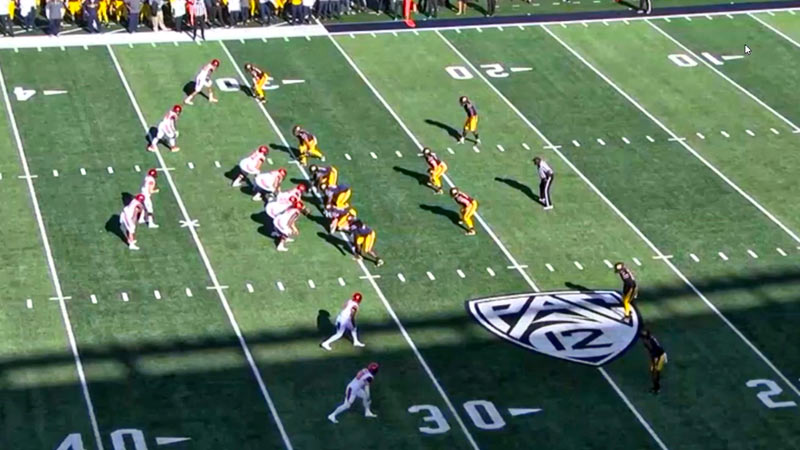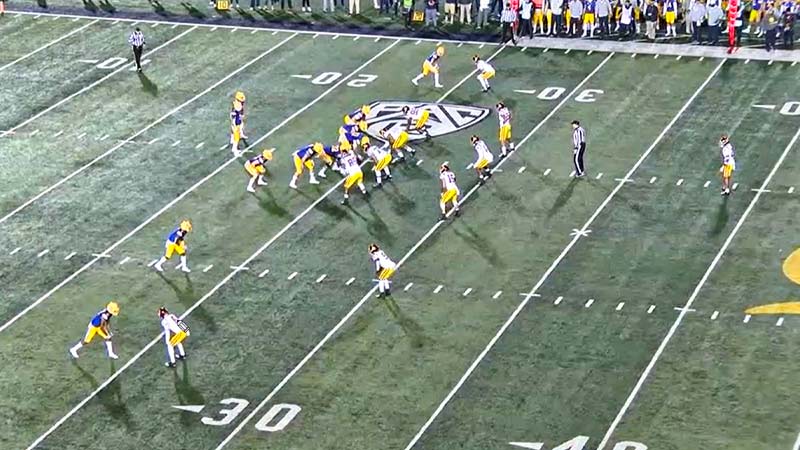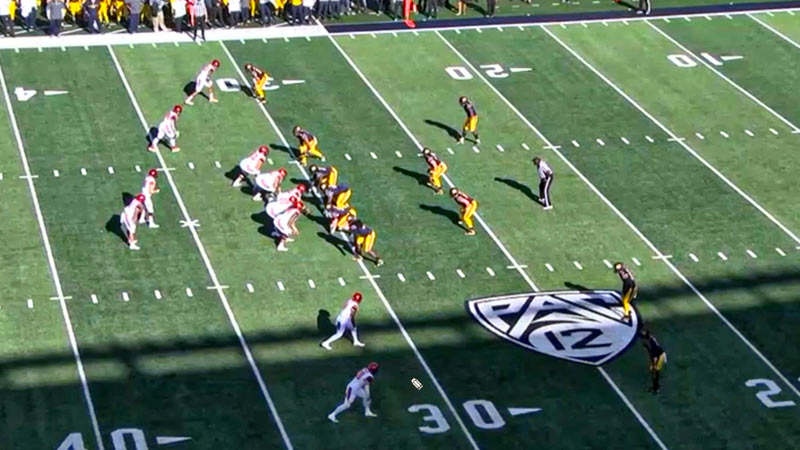Football is a game of strategy and skill, where every player on the field has a specific role to play. One crucial aspect of the game is pass coverage, a defensive technique employed to prevent the opposing team from completing successful passes.
Pass coverage involves a complex set of tactics and responsibilities that require coordination and communication among the defensive players.
In this comprehensive guide, we will delve into what is pass coverage in football. We will explore the different types of pass coverage schemes commonly used, such as man-to-man coverage, zone coverage, and combination coverages.
Understanding pass coverage is essential for both players and fans alike. By grasping the concepts and strategies behind this defensive technique, one can gain a deeper appreciation for the game. So, let’s dive into the world of pass coverage and unravel its secrets in the realm of football.
What Is Pass Coverage in Football?
In football, pass coverage refers to the defensive strategy employed by a team to prevent the opposing team’s receivers from successfully catching a pass. It involves the positioning and movement of defensive players to disrupt the passing game and defend against potential receivers.
Pass coverage can be categorized into different types, including man-to-man coverage and zone coverage.
Man-to-Man Coverage
In this type of coverage, each defensive player is assigned to cover a specific offensive player. The defender closely follows the assigned receiver, attempting to prevent them from catching the ball by staying in close proximity and disrupting their route.
Man-to-man coverage requires individual defensive players to have good speed, agility, and coverage skills.
Zone Coverage
In zone coverage, defensive players are responsible for specific areas of the field rather than individual receivers. The defenders drop into predetermined zones and aim to defend against any receivers entering their area.
Zone coverage allows defenders to keep their eyes on the quarterback and react to the play, making it effective against deep passes and providing more opportunities for interceptions.
Pass coverage is a crucial aspect of defensive strategy as it aims to limit the effectiveness of the opposing team’s passing game. It requires coordination, communication, and a good understanding of the opponent’s offensive schemes.
Effective pass coverage can disrupt the timing between the quarterback and receivers, force incomplete passes, and even lead to turnovers.
Types of Football Pass Coverages

There are several types of pass coverages commonly used in football. Here are some of the most popular ones:
Man-to-Man Coverage
In man-to-man coverage, each defensive player is assigned to cover a specific offensive player. The defenders closely follow their assigned receivers, attempting to prevent them from catching the ball by staying in close proximity and disrupting their routes.
Man-to-man coverage requires individual defensive players to have good speed, agility, and coverage skills.
Zone Coverage
Zone coverage involves defenders dropping into specific zones on the field rather than covering individual receivers. The defenders are responsible for defending their assigned zones and reacting to any receivers entering their area.
Zone coverage allows defenders to keep their eyes on the quarterback and react to the play, making it effective against deep passes and providing more opportunities for interceptions.
Cover 2
In Cover 2, the defense is divided into two deep zones, with two safeties responsible for covering the deep half of the field. The cornerbacks cover the short zones on the outside. This coverage is effective against deep passes and provides support against the run.
Cover 3
In Cover 3, the defense is divided into three deep zones, with one safety responsible for the deep middle and the cornerbacks covering the deep thirds of the field. The remaining defenders cover the short zones.
Cover 3 is effective against deep passes and provides additional support against intermediate routes.
Cover 4 (Quarters)
In Cover 4, also known as quarters coverage, the defense is divided into four deep zones, with each safety responsible for covering a deep quarter of the field. The cornerbacks cover the short zones on the outside.
Cover 4 is effective against deep passes and provides additional support against short and intermediate routes.
Combination Coverages
Combination coverages involve a combination of man-to-man and zone principles. These coverages aim to confuse the offense by mixing different coverage techniques and responsibilities.
Cover 1 (Man-Free)
In Cover 1, the defense primarily plays man-to-man coverage, with one safety playing deep in the center of the field (free safety). The free safety provides support against deep passes and helps defend against any receivers who beat their man coverage.
Cover 2 Man
In Cover 2 Man, the defense plays man-to-man coverage underneath with two safeties splitting the deep half of the field. This coverage combines man-to-man principles with the deep support of Cover 2.
These are just a few examples of the pass coverages used in football. Defensive coordinators often mix and match these coverages based on the opponent’s offensive tendencies, game situation, and personnel matchups.
How Do You Read Pass Coverages?

Reading pass coverages in football involves analyzing the alignment and movements of defensive players to determine the coverage scheme they are using. Here are some steps to help you read pass coverages:
Pre-Snap Analysis
Before the snap, observe the alignment of the defensive players. Look for the depth and positioning of the safeties, the alignment of the cornerbacks, and the positioning of the linebackers. These initial clues can provide insights into the coverage scheme.
Identify the Safeties
The positioning of the safeties is a key indicator of the coverage scheme. If both safeties are deep and split the field in half, it suggests a Cover 2 or Cover 4 zone coverage.
If one safety is deep and the other is closer to the line of scrimmage, it could indicate a Cover 1 or Cover 3 zone coverage, or even man coverage.
Observe the Cornerbacks
The alignment and positioning of the cornerbacks can provide further clues. If the cornerbacks are playing tight to the line of scrimmage and in press coverage, it suggests man coverage.
If they are playing off the line of scrimmage and giving a cushion to the receivers, it could indicate zone coverage.
Watch the Linebackers
The movements and positioning of the linebackers can also provide insights into the coverage scheme. If the linebackers drop into specific zones or cover specific areas of the field, it suggests zone coverage. If they follow specific receivers or tight ends, it indicates man coverage.
Analyze the Flow of the Defense
Once the play begins, observe how the defensive players react and move. If they drop into specific zones and pass off receivers to other defenders, it suggests zone coverage. If defenders closely follow specific receivers and mirror their routes, it indicates man coverage.
Recognize Patterns and Tendencies
Different teams and defensive coordinators have their own tendencies and patterns in their coverage schemes. By studying film and scouting reports, you can identify these tendencies and make more accurate predictions about the coverage scheme.
Consider Down and Distance
The down and distance situation can also influence the coverage scheme. Defenses may be more likely to play zone coverage in longer yardage situations to prevent big plays, while opting for man coverage in shorter yardage situations to disrupt routes and limit yards after the catch.
Reading pass coverages requires a combination of pre-snap analysis, observation during the play, and an understanding of defensive tendencies. It takes practice and film study to become proficient at reading and recognizing different coverage schemes.
Who Covers Who in Pass Coverage?

In football, pass coverage refers to the defensive strategy used to defend against passing plays. Different positions on the defensive side are responsible for covering different offensive players during pass plays. Here’s a general overview of who covers whom in football pass coverage:
Cornerbacks (CB)
Cornerbacks are usually responsible for covering the wide receivers on the outside of the formation. They line up directly in front of the wide receivers and aim to prevent them from catching passes or gaining yards after the catch.
Safeties (FS and SS)
Safeties are defensive backs who line up deeper in the secondary. The Free Safety (FS) typically plays farther back and is responsible for providing deep coverage and helping defend against long passes.
The Strong Safety (SS) plays closer to the line of scrimmage and may be responsible for covering tight ends, supporting against the run, and sometimes assisting in covering slot receivers.
Linebackers (LB)
Linebackers are responsible for covering running backs and tight ends, especially in short-to-intermediate pass routes. They may also assist in coverage against slot receivers in some defensive schemes.
Nickelback
The nickelback is a defensive back who replaces one of the linebackers when the defense expects a passing play, especially in situations where the offense has three or more wide receivers on the field. The nickelback covers the slot receiver.
Dimeback
Similar to the Nickelback, the dime back is an extra defensive back who replaces one of the linebackers when the defense anticipates a long passing play or when there are four or more wide receivers on the field. The dime back covers another receiver or plays deep coverage.
FAQs
How do defensive players communicate during pass coverage?
During pass coverage, defensive players communicate through various means to ensure proper coverage assignments and adjustments. They use hand signals, verbal cues, and pre-determined code words to convey information quickly and efficiently.
What are the key responsibilities of cornerbacks in pass coverage?
Cornerbacks play a crucial role in pass coverage. Their primary responsibility is to cover the opposing team’s wide receivers, either in man-to-man or zone coverage. They must stay close to their assigned receiver, disrupt their routes, and prevent them from catching the ball.
How do defenses defend against deep passes in pass coverage?
Defenses employ various strategies to defend against deep passes in pass coverage. One common approach is to use safeties to provide deep coverage, such as in Cover 2, Cover 3, or Cover 4. The safeties are responsible for defending against deep routes and preventing long completions.
What is the difference between man-to-man and zone coverage in pass defense?
The main difference between man-to-man and zone coverage lies in how defenders are assigned to cover receivers. In man-to-man coverage, each defender is responsible for covering a specific receiver, following them closely, and attempting to prevent them from catching the ball.
In zone coverage, defenders are responsible for specific areas of the field rather than individual receivers.
How do defenses adjust their pass coverage based on offensive formations?
Defenses adjust their pass coverage based on the offensive formations they face. They analyze the alignment of the offensive players, including the number of receivers, their positioning, and the presence of tight ends or running backs.
Based on this information, defenses may shift their coverage assignments or adjust the depth of their zones.
Final Words
So, now you know what is pass coverage in football. Pass coverage is a vital aspect of football that can make or break a team’s defensive performance. By effectively executing pass coverage techniques, teams can disrupt the opposing offense, limit successful passes, and create turnovers.
Understanding the different types of pass coverage schemes and the roles of individual defensive players is crucial for players, coaches, and fans alike.
Whether it’s the intense man-to-man coverage, the strategic zone coverage, or the combination of coverages that keep offenses guessing, pass coverage requires discipline, communication, and coordination among the defensive unit.
By delving into the intricacies of pass coverage, we can gain a deeper appreciation for the strategic elements of football. So, next time you watch a game, pay close attention to the defensive backfield and witness the artistry of pass coverage unfold before your eyes.







